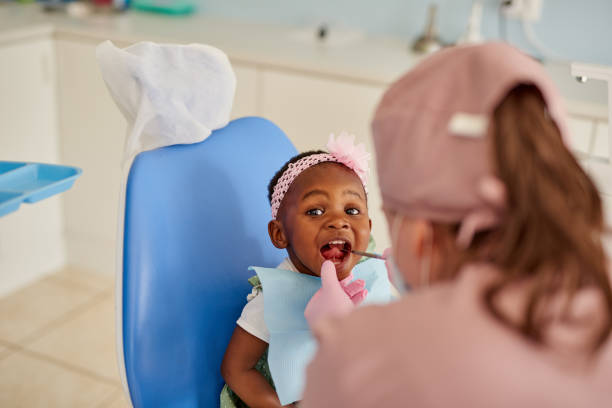When it comes to dental care for children, the environment in which treatment occurs plays a pivotal role in shaping their experiences and attitudes toward oral health. A pediatric dental clinic is specifically designed to cater to the unique needs of young patients, ensuring that every visit is not just about dental procedures but also about fostering a sense of security and comfort. This article explores how these specialized clinics create a safe and welcoming atmosphere, helping children develop positive associations with dental care that can last a lifetime.
Creating a Welcoming Environment
The first impression is often the most lasting, especially for children apprehensive about visiting the dentist. Pediatric dental clinics understand this and go to great lengths to design their spaces with young patients in mind. Colorful murals, playful decorations, and kid-friendly furniture transform a potentially intimidating setting into one that feels fun and inviting. This thoughtful design approach helps alleviate anxiety and encourages children to feel at ease as soon as they enter the door.
Moreover, the waiting area has toys, books, and engaging activities that distract children while they wait for their appointments. By creating an enjoyable and stimulating environment, pediatric clinics ensure that children are entertained and distracted from any fear or nervousness they may feel about their upcoming treatment. The overall atmosphere is one of warmth and friendliness, making it clear that the clinic is where children can feel safe and cared for.
Trained and Compassionate Staff
Another essential element of a pediatric dental clinic is the team of professionals dedicated to ensuring every child's experience is positive. Dentists and dental hygienists in these clinics are specially trained to work with children, understanding their unique psychological and emotional needs. This expertise allows them to communicate effectively and empathetically, using age-appropriate and easy-to-understand language. Instead of using technical jargon that might confuse or frighten a young patient, they explain procedures in simple terms that demystify what is happening.
Staff members are skilled in dental practices and chosen for their ability to connect with children. They employ a gentle, friendly demeanor and often incorporate playful interactions into their routine. For example, they might use a puppet to demonstrate how a dental check-up works or offer rewards like stickers or small toys for good behavior during an appointment. These thoughtful gestures can transform a daunting experience into a fun and rewarding, fostering trust between the child and the dental team.
Use of Child-Friendly Technology
Dental technology advancements have significantly enhanced dental visits' safety and comfort. Pediatric clinics are often equipped with state-of-the-art tools designed specifically for young patients. For instance, digital imaging techniques minimize radiation exposure and provide immediate feedback, allowing the dentist to explain findings in real time. This transparency can empower children, making them feel more involved in their care.
Additionally, many clinics utilize sedation dentistry options that are tailored for children. These techniques ensure that anxious patients can receive the necessary treatments without the overwhelming fear or discomfort that might otherwise accompany them. The child's comfort is always the priority, and using these modern technologies aligns perfectly with that goal. By integrating these innovations, pediatric dental clinics can provide a level of care that is both effective and reassuring.
Educational Initiatives and Empowerment
A fundamental aspect of pediatric dentistry is education. Clinics focus on treating dental issues and emphasize the importance of preventive care and oral hygiene. Dentists often take the time to educate children about the significance of brushing and flossing in an engaging and relatable way. Using visual aids, interactive demonstrations, and fun facts, they can instill a sense of responsibility in young patients regarding their oral health.
Furthermore, educational initiatives extend beyond the dental chair. Many clinics host community events or school programs where children can learn about dental health in a relaxed setting. Removing the clinical aspect of dental education allows children to ask questions and express their concerns without fear of judgment. This proactive approach not only equips children with the knowledge they need to maintain good oral hygiene but also reinforces the idea that dental visits can be positive and informative experiences.
Building Long-Term Relationships
Ultimately, a pediatric dental clinic aims to build lasting relationships with its young patients and their families. By fostering a comfortable and inviting environment, employing compassionate staff, utilizing advanced technology, and focusing on education, these clinics can help children develop a positive outlook on dental care. This nurturing approach encourages children to maintain their oral health and instills a sense of trust that can extend beyond childhood.
Regular visits to the dentist have become a normal part of life rather than a source of anxiety. As children grow and mature, they carry with them the lessons learned during their formative dental experiences. They become adults who prioritize their oral health, leading to less dental fear and a greater likelihood of seeking care when needed. The pediatric dental clinic is not just a place for treatment; it is a foundation for a lifetime of healthy habits and positive dental experiences.
In conclusion, pediatric dental clinics are crucial in shaping children's dental experiences. They create a safe and comfortable environment that fosters trust, reduces anxiety, and empowers young patients through thoughtful design, compassionate care, advanced technology, and educational initiatives. The impact of these efforts extends far beyond the dental chair, laying the groundwork for a future where children view oral health as an essential and positive aspect of their lives.





Comments